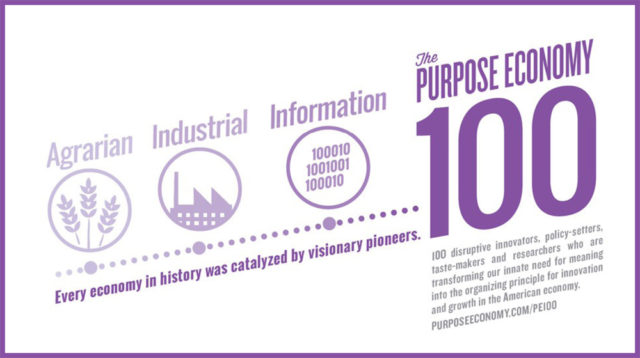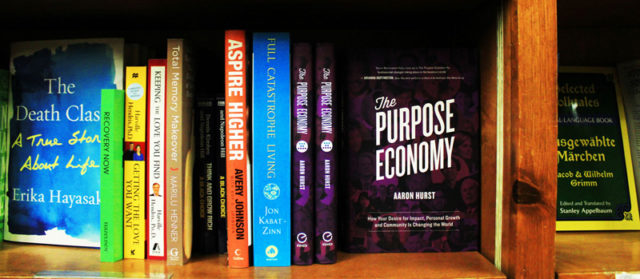
The Purpose Economy Capitol
June 9, 2014 — Blog
I went to high school and college just outside Detroit in Ann Arbor, Michigan. It was a very different Detroit than the one my grandmother knew when she arrived as a refugee from Nazi Germany. She painted a picture of a city in its heyday flush with lavish homes, energy and optimism. It was the global hub of the Industrial Economy, not the ghost town it is today.
After college I moved to Silicon Valley and was struck by how much it resembled my grandmother’s description of the Detroit she knew. It was a vibrant and innovative city with tremendous wealth and opportunity. Silicon Valley had replaced Detroit as the epicenter of the economy when we moved from the industrial to information age.

As we enter the fourth economic era, the Purpose Economy, Silicon Valley will likely be replaced as the global hub of innovation just as it replaced Detroit during the rise of the Information Economy. This is a historic opportunity for another city to lead and thrive.
Over the years, I have been exploring the changes in our society that I first observed as the founder of the Taproot Foundation. Every market is undergoing radical changes from retail to finance to government.

What is the Purpose Economy?
Purpose is created through relationships, doing something greater than ourselves and personal growth. These will be the drivers of the new economy and will be core to the design of the ‘Silicon Valley’ of the Purpose Economy.
What will a the hub of the Purpose Economy look like? We don’t have a full picture but there are some clues that help to cities develop a vision for their future.
1) Measuring What Matters
In the current Information Economy, the wisdom is: “that which gets measured gets done.” Well, that is likely to bridge into the new economy and it will be critical for cities to measure the wellbeing of their residents as their core barometer of city strength. Santa Monica has been a leader in this regard.
2) Investment in Community
San Francisco and Silicon Valley are known for many things, but not community. They haven’t be designed to optimize for human interaction and communities. The best models appear to be places like Brooklyn where communities are built around schools and parks.
3) Local Business / Local Manufacturing
Purpose is greatest when we buy goods and service from neighbors and ideally create our own goods as well – at least customize them to our tastes. This requires creating integrated communities where we can live, create and shop.
4) Fluid Transportation
Nothing kills community and purpose like driving a car alone. But we must be able to easily access and move about the city to become part of different ecosystems. A Purpose Economy capitol will likely make life without a car easy and enjoyable.
5) Lifelong Learning
We are entering a time of disruption in our education system. Education in the Purpose Economy will be integrated into the community and be seen as a lifelong experience, not something from which we graduate and move on. This means making schools a much bigger part of the design of neighborhoods and partnering them with local business and organizations.
6) Intergenerational Housing
Families are vital to purpose and we will be moving back to creating housing where we can live side-by-side with multiple generations rather than running from them. The old-age home will become integrated into mainstream housing. This will be made easier with advances in technology for medical monitoring.
7) Government of Volunteers
The government of a Purpose Economy city will lead from behind and empower residents to become voluntary members of the government programs and leadership. The Purpose Economy city will be more active in self-governing and in helping our neighbors in need through greater access and transparency.
8) Return of Humanities & Arts
In the Information Economy the humanities and arts become a luxury and our society narrowed our focus on science and engineering. To build communities of well-being, purpose and empathy, the humanities & arts will again become a priority in education and civic life.
9) Self-Sufficiency
While not completely off the grid, the Purpose Economy capitol will likely generate much of its food and energy within city limits or within 100 miles. Urban farming and energy generation will be integrated into buildings and city infrastructure.
The cities that inspire and support these changes will be well positioned to lead in the next economic era in our history. There are dozens of cities around the world positioned to become the next Silicon Valley. The one that pulls it off will require significant vision, courage and resilience but will see rewards.
As a father, I am excited for my children. The Purpose Economy is going to make the adult world they enter more human and sustainable. It couldn’t have happened a moment sooner.